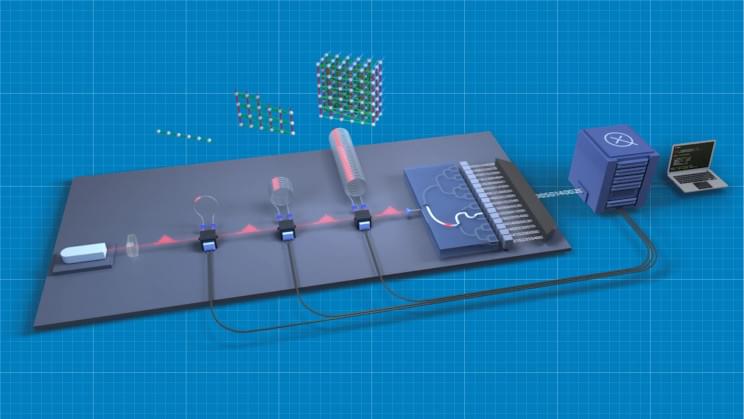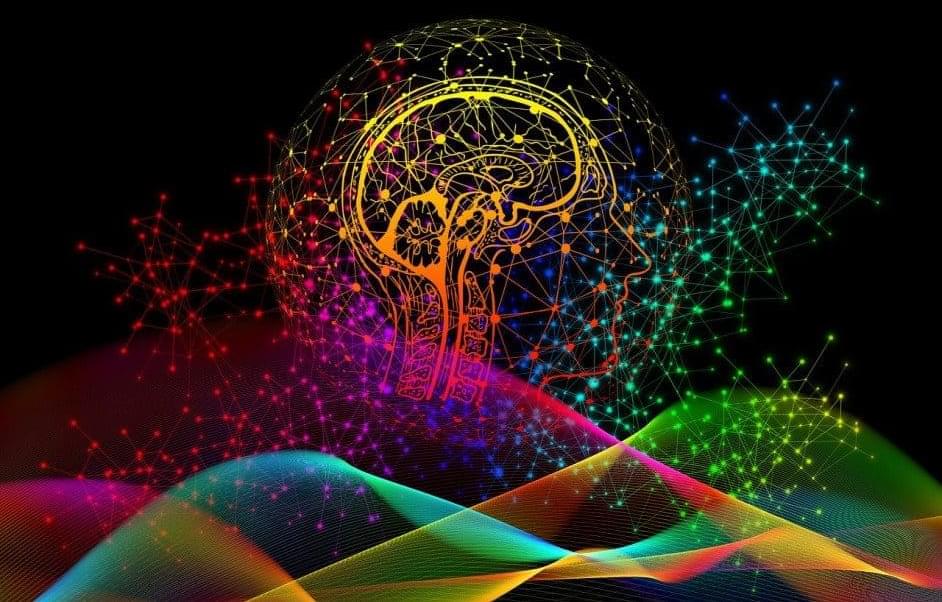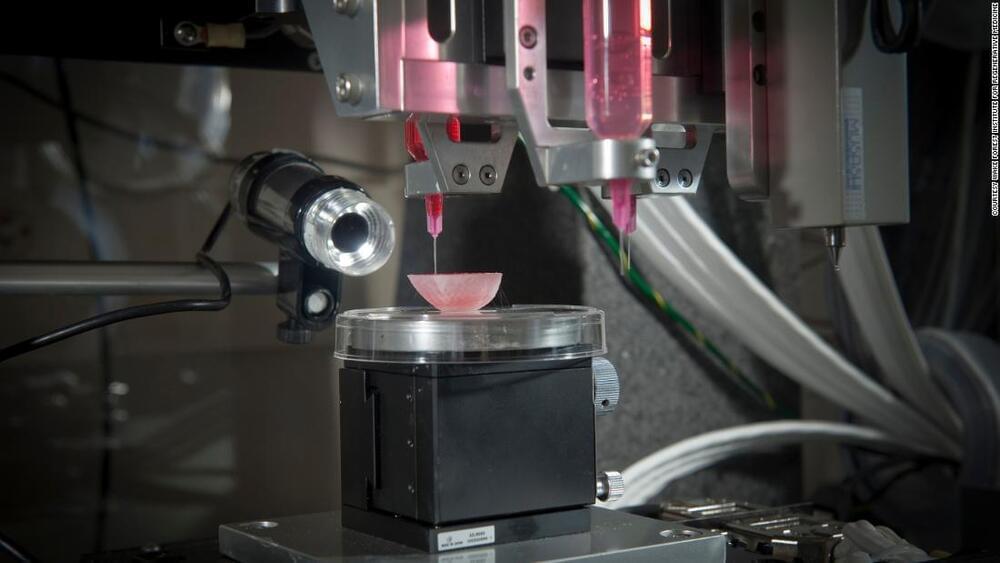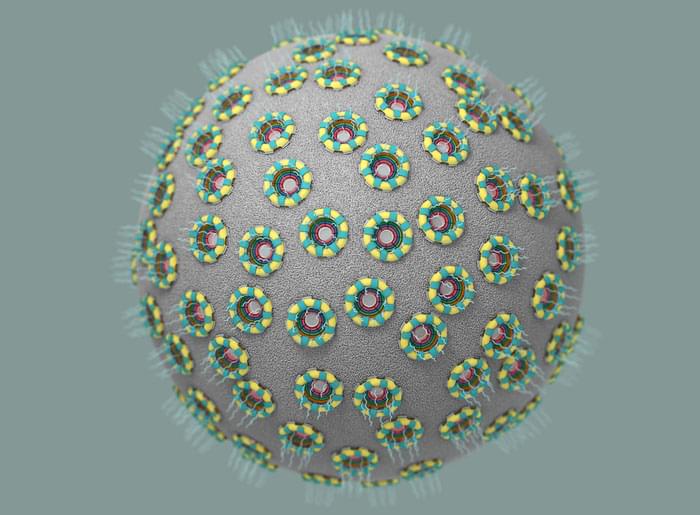Page 4759
Jun 11, 2022
One Step Closer to AI With a Human-Like Mind
Posted by Kelvin Dafiaghor in category: robotics/AI
A team of researchers at the Graduate School of Informatics, Nagoya University, have brought us one step closer to the development of a neural network with metamemory through a computer-based evolution experiment. This type of neural network could help experts understand the evolution of metamemory, which could help develop artificial intelligence (AI) with a human-like mind.
The research was published in the scientific journal Scientific Reports.
What is Metamemory?
Jun 11, 2022
The Epic History of Artificial Intelligence
Posted by Kelvin Dafiaghor in categories: finance, robotics/AI

Join my community at http://johncoogan.com (enter your email)
All images were generated by OpenAI’s DALL-E 2: https://openai.com/dall-e-2/
Continue reading “The Epic History of Artificial Intelligence” »
Jun 11, 2022
Full stack Starship Lifting off of the pad for first orbital flight test, Render
Posted by Heather Blevins in category: space travel
Jun 11, 2022
When we’ll be able to 3D-print organs and who will be able to afford them
Posted by Dan Kummer in categories: 3D printing, bioprinting, biotech/medical
To begin the process of bioprinting an organ, doctors typically start with a patient’s own cells. They take a small needle biopsy of an organ or do a minimally invasive surgical procedure that removes a small piece of tissue, “less than half the size of a postage stamp,” Atala said. “By taking this small piece of tissue, we are able to tease cells apart (and) we grow and expand the cells outside the body.”
This growth happens inside a sterile incubator or bioreactor, a pressurized stainless steel vessel that helps the cells stay fed with nutrients – called “media” – the doctors feed them every 24 hours, since cells have their own metabolism, Lewis said. Each cell type has a different media, and the incubator or bioreactor acts as an oven-like device mimicking the internal temperature and oxygenation of the human body, Atala said.
“Then we mix it with this gel, which is like a glue,” Atala said. “Every organ in your body has the cells and the glue that holds it together. Basically, that’s also called ‘extracellular matrix.’”.
Jun 11, 2022
Xanadu Photonic Quantum Chip Solves Trillions of Times Faster
Posted by Chris J. Kent in categories: internet, quantum physics, supercomputing

Canadian quantum computer company, Xanadu, has used its photonic quantum computer chip, Borealis, to solve a problem in 36 microseconds versus classical supercomputers taking 9,000 years. This is 7,884 trillion times faster. This runtime advantage is more than 50 million times larger than that of earlier photonic demonstrations.
An earlier quantum photonic computer used a static chip. The Borealis optical elements can all be readily programmed.
Continue reading “Xanadu Photonic Quantum Chip Solves Trillions of Times Faster” »
Jun 10, 2022
Decoding a key part of the cell, atom
Posted by Shubham Ghosh Roy in categories: computing, genetics, nanotechnology, nuclear energy, particle physics
Whatever you are doing, whether it is driving a car, going for a jog, or even at your laziest, eating chips and watching TV on the couch, there is an entire suite of molecular machinery inside each of your cells hard at work. That machinery, far too small to see with the naked eye or even with many microscopes, creates energy for the cell, manufactures its proteins, makes copies of its DNA, and much more.
Among those pieces of machinery, and one of the most complex, is something known as the nuclear pore complex (NPC). The NPC, which is made of more than 1,000 individual proteins, is an incredibly discriminating gatekeeper for the cell’s nucleus, the membrane-bound region inside a cell that holds that cell’s genetic material. Anything going in or out of the nucleus has to pass through the NPC on its way.
Nuclear pores stud the surface of the cell’s nucleus, controlling what flows in and out of it. (Image: Valerie Altounian)
Jun 10, 2022
10 Best Tools for Machine Learning
Posted by Jose Ruben Rodriguez Fuentes in categories: education, robotics/AI, security
The will help you find new opportunities to use and further develop your machine learning skills.
Machine learning has proven to be a tool that performs well in a variety of application fields. From educational and training companies to security systems like facial recognition and online transaction prevention, it is used to improve the quality and accuracy of existing techniques.
Choosing the best tools for machine learning and navigating the space of tools for machine learning isn’t as simple as Google searching “machine learning tools”.
Jun 10, 2022
DARPA Seeking Proposals for ANSR Program to Improve Trustworthy AI; Sandeep Neema Quoted
Posted by Dan Kummer in category: robotics/AI
Defense Advanced Research Projects Agency (DARPA) announced on Friday that the agency is seeking proposals for its Assured Neuro Symbolic Learning and Reasoning (ANSR) program to address the trustworthiness of artificial intelligence and machine learning capabilities. Motivating new thinking and ap.
Jun 10, 2022
Synapse Study Explores the “Dark Matter of the Brain”
Posted by Michael Taylor in categories: biological, chemistry, cosmology, neuroscience
They are part of the brain of almost every animal species, yet they remain usually invisible even under the electron microscope. “Electrical synapses are like the dark matter of the brain,” says Alexander Borst, director at the MPI for Biological Intelligence, in foundation (i.f). Now a team from his department has taken a closer look at this rarely explored brain component: In the brain of the fruit fly Drosophila, they were able to show that electrical synapses occur in almost all brain areas and can influence the function and stability of individual nerve cells.
Neurons communicate via synapses, small contact points at which chemical messengers transmit a stimulus from one cell to the next. We may remember this from biology class. However, that is not the whole story. In addition to the commonly known chemical synapses, there is a second, little-known type of synapse: the electrical synapse. “Electrical synapses are much rarer and are hard to detect with current methods. That’s why they have hardly been researched so far,” explains Georg Ammer, who has long been fascinated by these hidden cell connections. “In most animal brains, we therefore don’t know even basic things, such as where exactly electrical synapses occur or how they influence brain activity.”
An electrical synapse connects two neurons directly, allowing the electrical current that neurons use to communicate, to flow from one cell to the next without a detour. Except in echinoderms, this particular type of synapse occurs in the brain of every animal species studied so far. “Electrical synapses must therefore have important functions: we just do not know which ones!” says Georg Ammer.
















